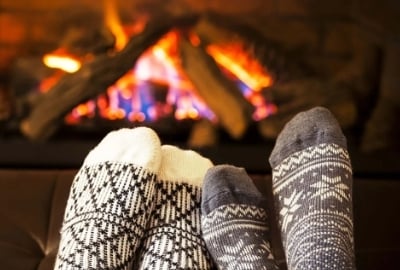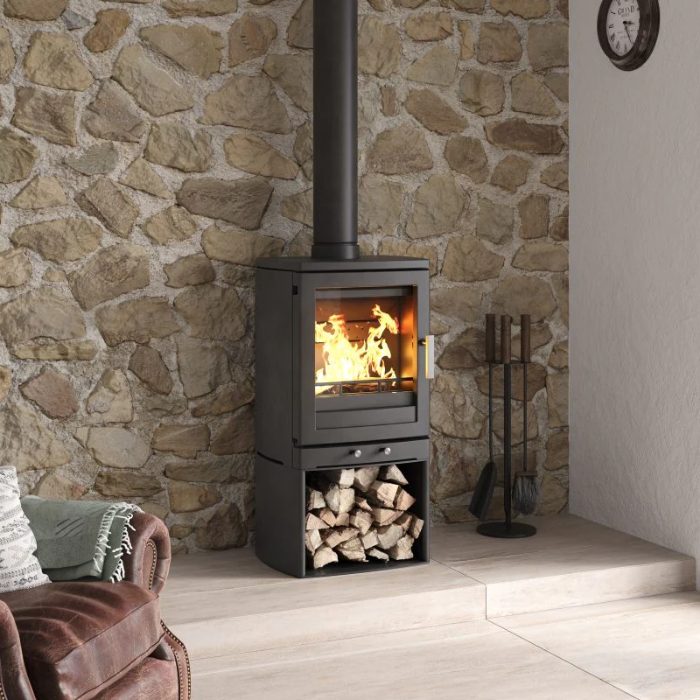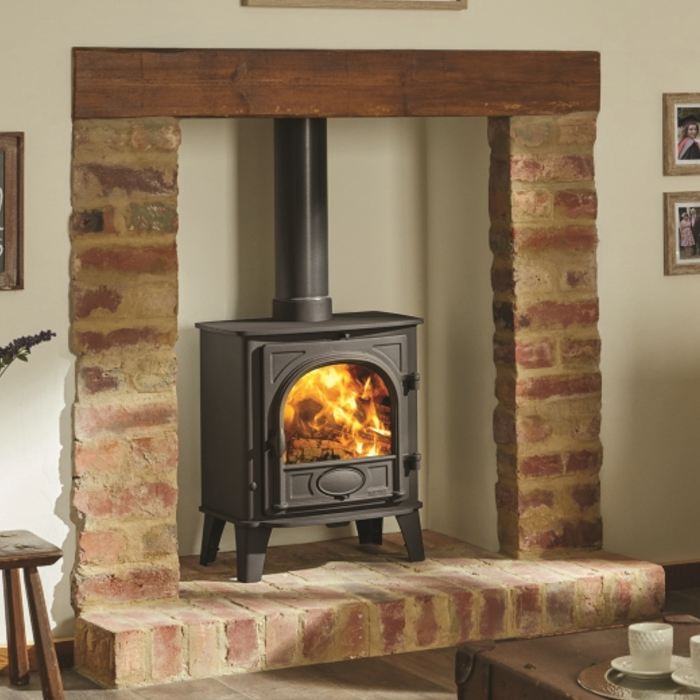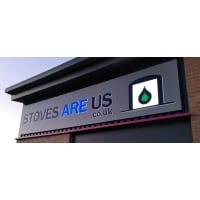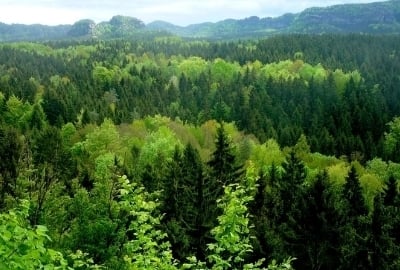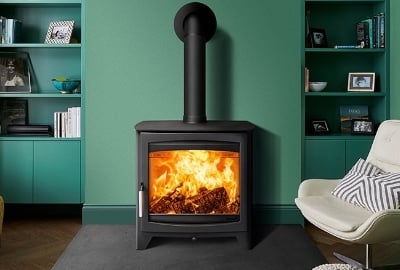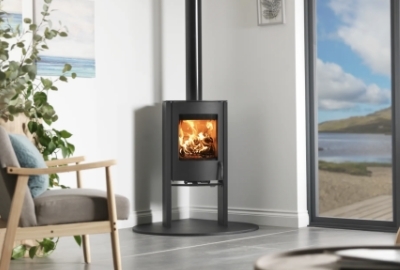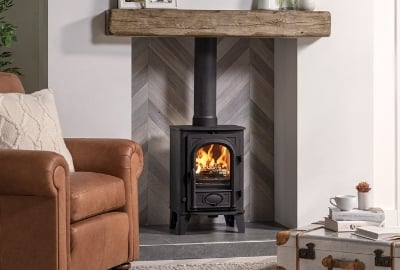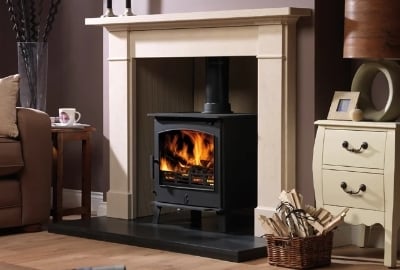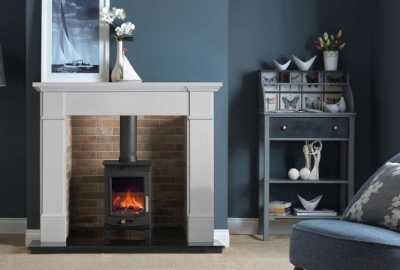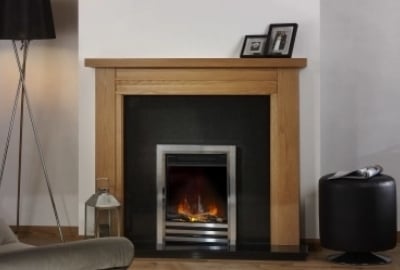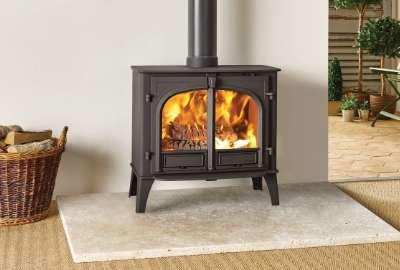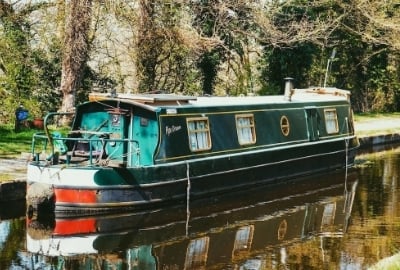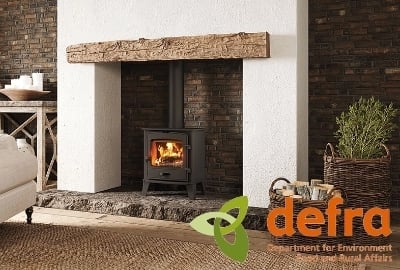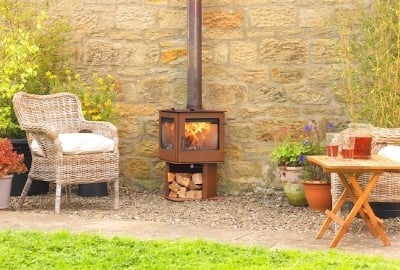As the nights draw in and temperatures begin to drop, there’s nothing quite like the warmth and comfort of a real fire. But if you’re thinking about installing a new stove, log burner, or fireplace ready for the autumn and winter months, timing is everything.
Buying during the peak season of October and November can mean limited choice and long waits for installation. That’s why savvy homeowners plan ahead, securing their new fire in the quieter months when stove retailers offer discounts, stock levels are high, and skilled installers have availability. By choosing the right time to buy, you not only save money but also ensure your home is winter-ready before the first frost arrives.
Contents
When’s the best time to install?
Choosing the right stove
2025 stove trends
Safety and installation advice
Can you install a wood burner yourself?
How much does installing a stove cost?
When’s the best time to install?
There’s something deeply comforting about the glow of a real fire on a crisp autumn evening. If you’ve been thinking about upgrading your current stove or installing your first log burner, late summer is the ideal time to start. By getting ahead of the seasonal rush, you can have your new fire ready to use the moment the temperature dips without battling installation backlogs.
While it may seem strange to think about heating in August, this is the ideal time for new fire and stove installations. Demand starts to pick up in early autumn, and leaving it too late can mean longer waits for engineers and supply shortages of popular stove models. Installing before the colder months ensures everything is ready, safe, and tested before you need it most.
Choosing the right stove
The right stove for you will depend on a mix of practical and personal factors, like what type of fuel you’d prefer. For example, are you looking for a stove or a wood burner? A wood burner uses logs exclusively, while a multi-fuel stove can also burn approved solid fuels, offering more flexibility. There are electric stoves and fires to consider too, and these can simply plug in to a wall socket without the need for complicated installations, making them a portable and renter-friendly option too.
Consider the size of your space. Too small a stove and you’ll be chilly; too large and you may find it uncomfortably warm. As a rule of thumb, you’ll need around 1kW of heat output for every 14 cubic metres of space.
Many modern stoves are highly efficient, delivering more heat with less fuel. If eco-credentials are important to you, look for high-efficiency ratings and for DEFRA-approved or EcoDesign models to meet the latest environmental standards.
And, of course, aesthetics are important. From sleek contemporary designs to more traditional, cast-iron styles, your stove can double as a statement piece. So, it’s worth shopping around until you find a stove you love.
2025 stove trends
Your choice of stove might be influenced by your interior design scheme. Recently, there’s been a rise in Art Deco-inspired interiors, which has sparked interest in more decorative fireplaces and heritage-style stoves with intricate detailing. These can work beautifully in period properties or to add character to a modern home. Meanwhile, minimal, matt-black log burners remain a favourite for contemporary spaces, especially when paired with a neutral, Scandi-inspired palette.
- Statement Stoves as Design Centrepieces - Stoves are evolving beyond functional appliances into bold design statements. Customisable options like those from Arada and Hamlet, offering substantial colour choices and are becoming focal points in modern living spaces. Brands such as Charlton & Jenrick and Stovax offer handcrafted, ultra eco ranges that blend stunning designs with efficient performance.
- Minimalist & Natural Aesthetic - The “less is more” philosophy is leading the way. Sleek, understated stoves with simple, straight lines, hidden components, and low-emission combustion complement minimalist interiors perfectly. When paired with indoor greenery or other biophilic touches, they create a serene, nature-inspired atmosphere.
- Eco-Friendly & Multi-Fuel Options - Sustainability continues to be a lasting priority. Multi-fuel stoves, capable of burning logs, briquettes, or smokeless fuels, remain a popular choice in the UK and are often DEFRA-approved for use in smoke control areas. Today’s designs focus on long-lasting durability, efficient clean burning, and a strong commitment to environmental responsibility.
- Compact & Double-Sided Designs - Ideal for contemporary and open-plan homes, compact stoves maximise space without compromising style, efficiency, or heat output. Sleek and versatile, they fit seamlessly into smaller areas while delivering the warmth of a full-sized model. Double-sided stoves are also rising in popularity, serving as elegant focal points that heat two rooms at once, combining architectural appeal with practical efficiency.
- Smart & Connected Heating - Electric fireplaces and gas stoves are evolving to match the connected home lifestyle. With app-based remote controls, smart home integration through Alexa or Google Home, and built-in energy monitoring, these innovations are changing the way we use and enjoy our hearths.
Safety and installation advice
Installing a stove isn’t simply a matter of placing it in the room; it must meet strict safety requirements. Wood-burning stoves should always be installed by a professional, ideally a HETAS-registered engineer, who will ensure the work complies with building regulations, including ventilation and chimney safety.
According to Fire and Rescue guidelines, poor installation can lead to dangerous carbon monoxide leaks or chimney fires. A professional will also advise on flue type, hearth size, and the best position for heat circulation.
Can you install a wood burner yourself?
While it’s technically possible for a competent DIYer to install a stove, it’s rarely advisable unless you have professional experience. Any installation will need to be signed off by your local authority’s building control department, and mistakes can be costly, not just financially, but in terms of safety. Using a HETAS engineer means you avoid this paperwork and can be confident the work is compliant.
How much does installation cost?
The cost of installing a new fire or stove depends on several factors, including:
- The type of stove you choose (wood burner, multi-fuel or gas).
- Whether you already have a chimney or need a twin-wall flue system.
- Any extra work required, such as adding a hearth or reinforcing a fireplace opening.
As a guide, basic installations can start from around £800–£1,500, but more complex projects can exceed £3,000 (StovesAreUs). The average installation cost for a log burner in the UK sits around £2,000 (Checkatrade).
Whether you’re drawn to the timeless charm of a wood burner, the versatility of a multi-fuel stove, or the convenience of an electric or hybrid model, there’s never been more choice to suit your home and lifestyle. By investing in the right stove at the right time of year, you can enjoy not only a beautiful focal point but also efficient, responsible heating for years to come.

